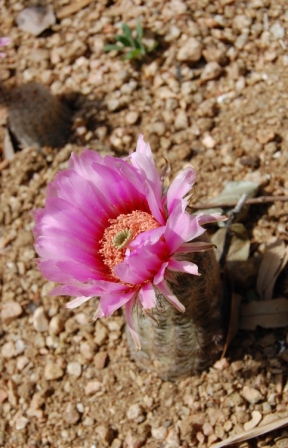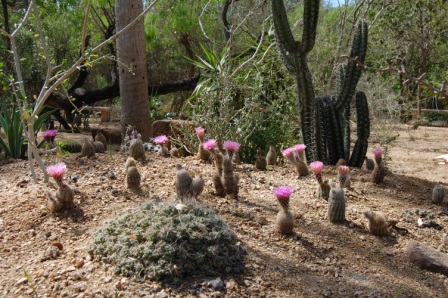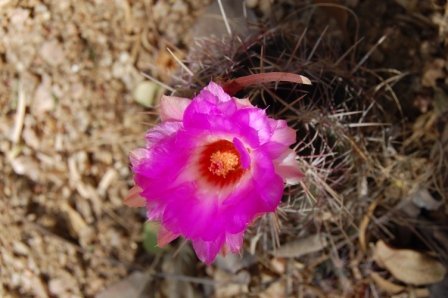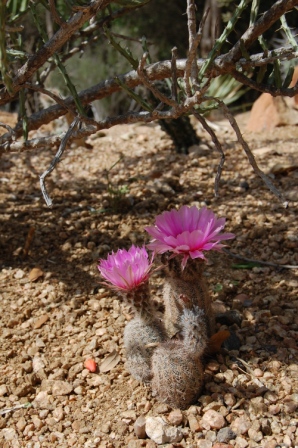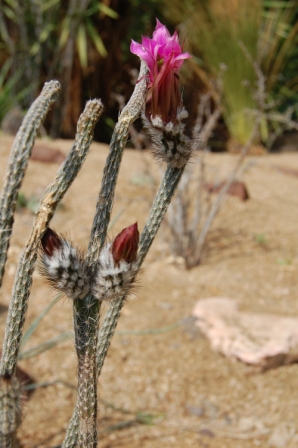Written by Carol Goolsby, Education Supervisor
Your jaw might just drop. Your feet might come to a sudden halt. Your eyes won’t believe what they are seeing. There is a flower…only few people in the United States have the privilege of getting to see…that has one SERIOUSLY beautiful scent! A CACTUS flower that only blooms at NIGHT! And it grows in the Lower Rio Grande Valley. I’d like to introduce you…to our Night-blooming Cereus.
Although it is widespread further south in Mexico, the Lower Rio Grande Valley is its northernmost growing range. We are its only home in the U.S. It grows along the back wildcat sculpture trail at Quinta Mazatlan, standing 5-10 feet tall, growing in massive clumps around every bend. During the daytime one’s attentions might be diverted to the lizards, rabbits, birds and snakes darting in and out of its thorny mott to take refuge. But at night…if you are lucky to pass through in a week after a rain…something magical happens…the flowers bloom. And nothing else…compares.
Although this cactus can propagate itself by simply falling over onto new soil, and digging new roots in where it lay, Night-blooming Cereus is hardwired to “know” that any plant species is better off if it can get away from its parent. So it puts out a delicious red “tuna” full of seeds, hoping for some bird, rabbit, javelin, deer to be lured to eating the fruit…and then “depositing” its seeds far away. But no fruit…no seed…could have ever developed were it not for a different creature of the nocturnal forest: the mighty moth! When the sun goes down…Night-blooming Cereus opens its petals, and the forest is filled with the perfume of the heavens. Moths are lured in like a hot Friday night date! As they feast on the nectar deep within the flower, their wings become coated in pollen. Crazy from the scent in the air, they move from flower to flower in a feeding frenzy that leaves the motionless cactus flower… quietly pollinated. The petals then close, and the chemistry of pollination forces the flowers to fall off. And the plant no longer needs its perfume. Instead it turns its energies on nurturing the new life inside its seeds.
Only a few people in this country ever get to experience this “magical floral feast in the forest”. It’s not only difficult to see because it is at NIGHT when this happens, but it is also difficult because it only happens after a rain burst. Which is RARE these days! But when the LRGV does have a downpour, like we did last week…the cacti respond rapidly. Your jaw just might drop open at seeing just how many fist-size fruit are suddenly decorating the otherwise drab gray forest in bright fuscia reds. Your feet might just come to a sudden halt when you see how LARGE those closed up flower petals are, that two weeks ago were not even there. And your mind might just wander off to the right place—to a Lower Rio Grande Valley “WOW” moment… as it realizes just how “seriously” unique and beautiful this place we call home…can be.
You can see the Night-blooming Cereus Cactus on Quinta Mazatlan’s Wildcat Trail. Quinta Mazatlan is open to the public Tuesday through Saturday, 8 am-5 pm, with extended hours on Thursday evenings, for Family Night activities.





